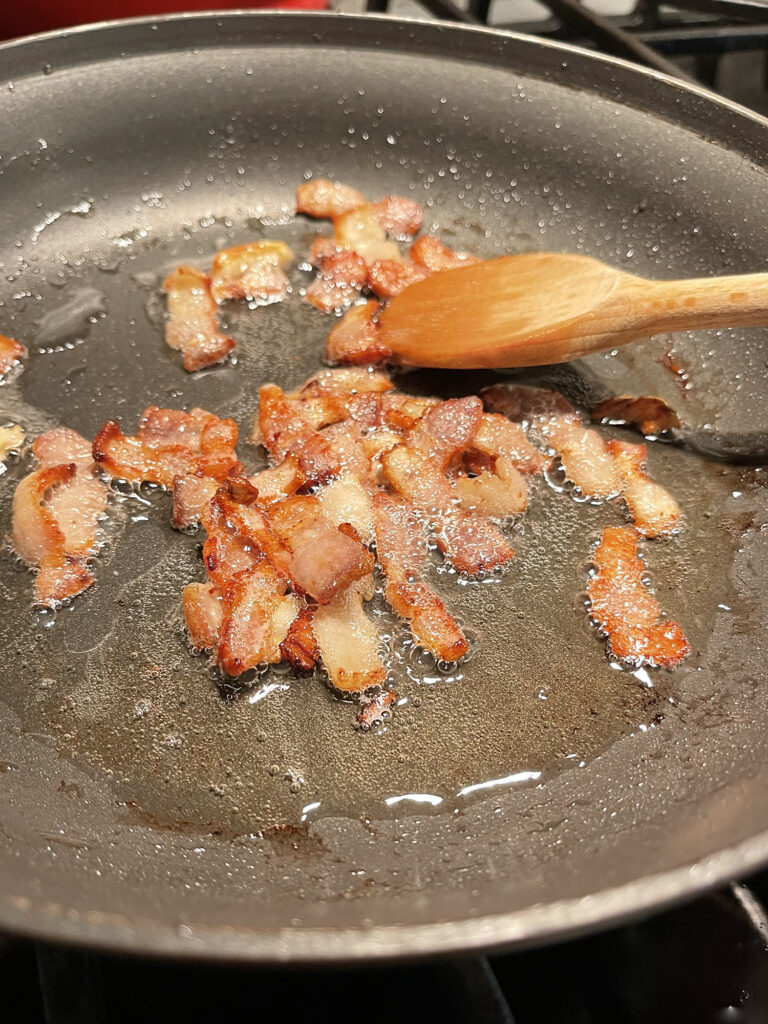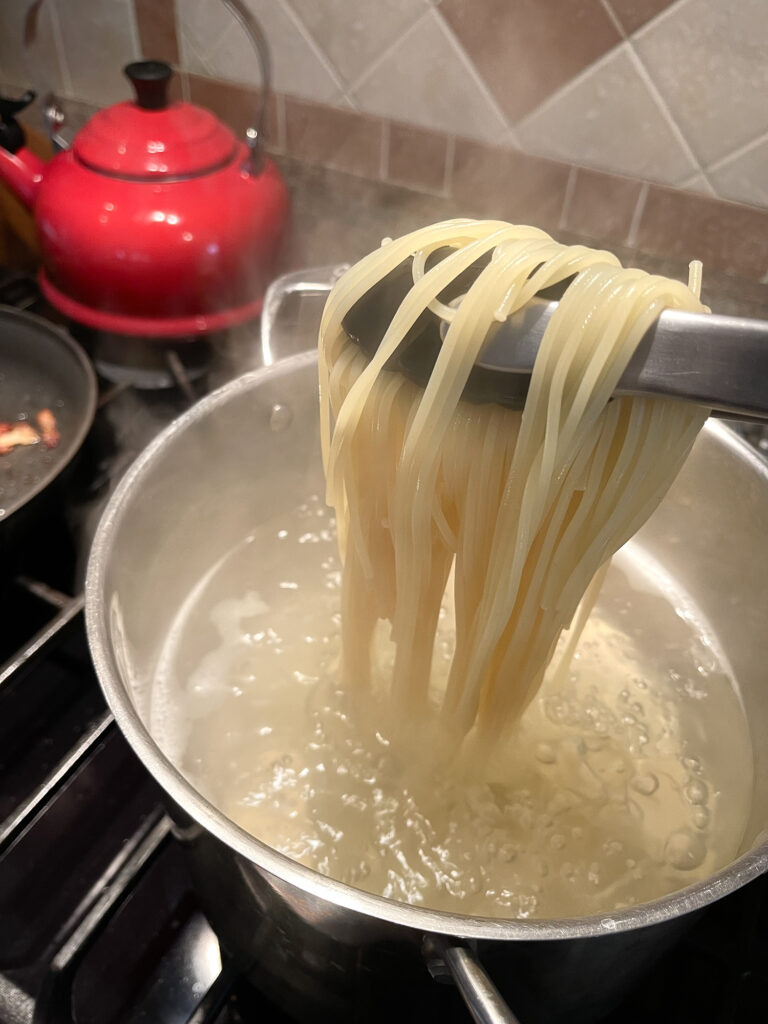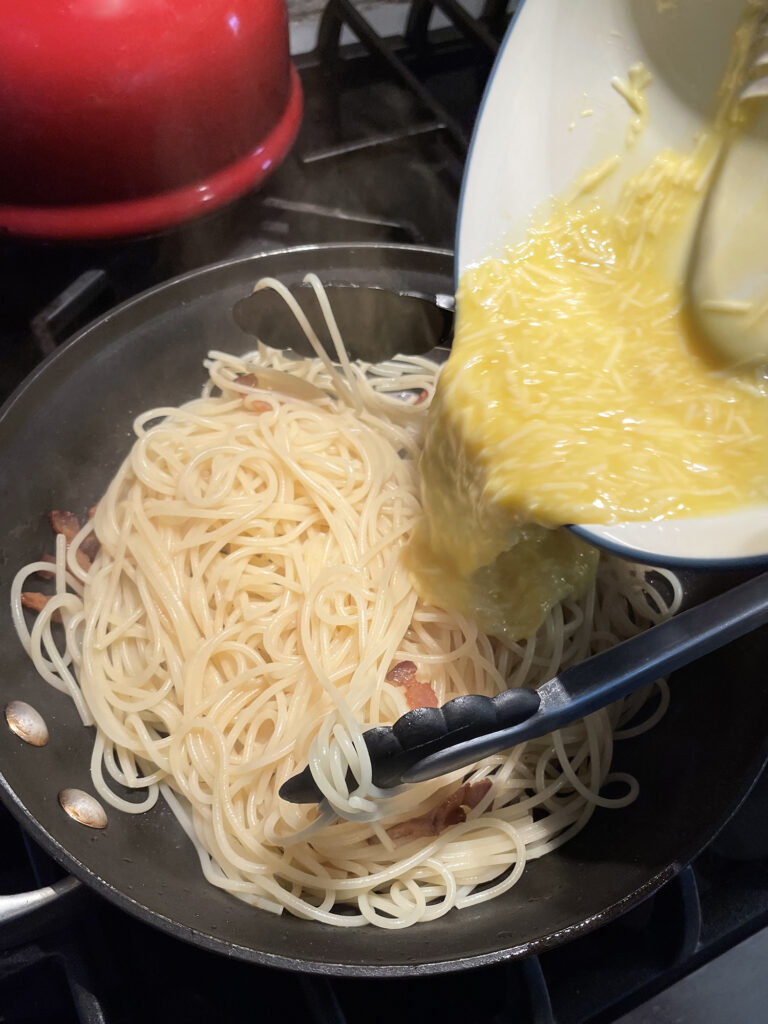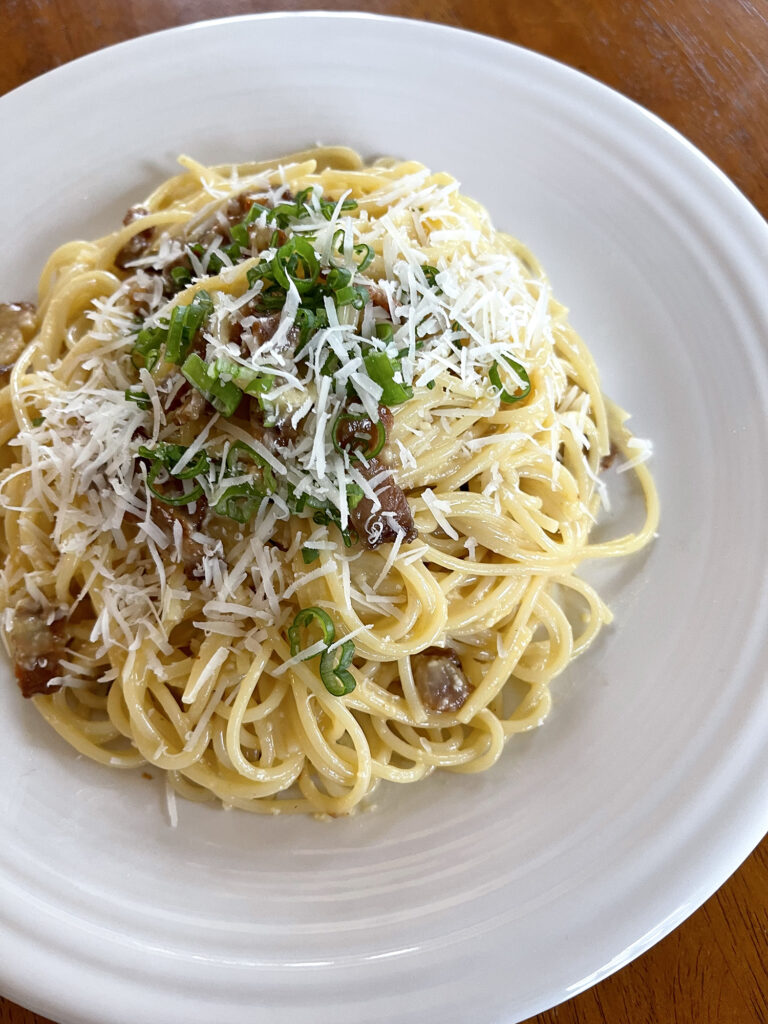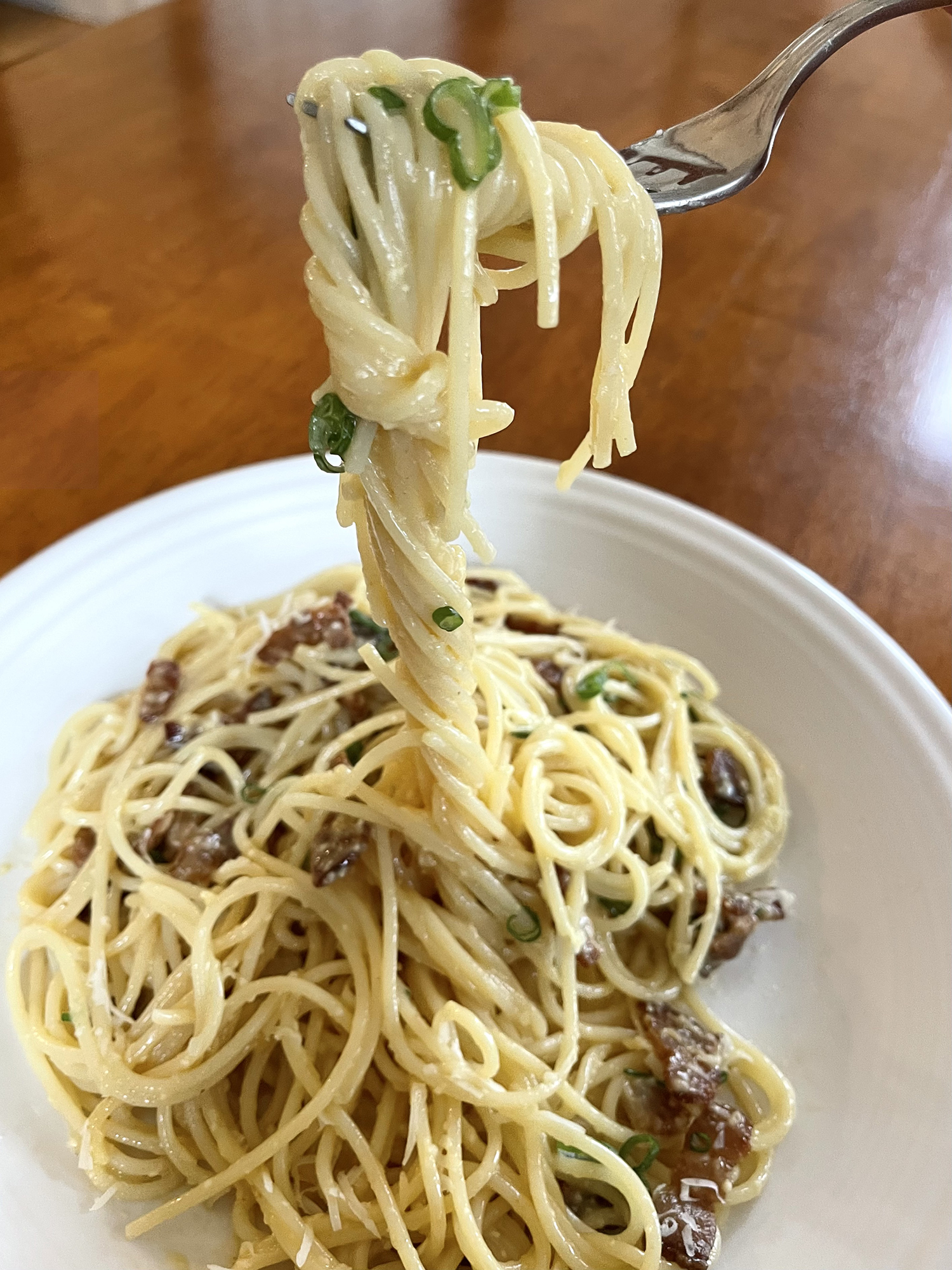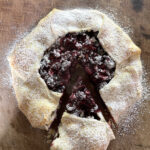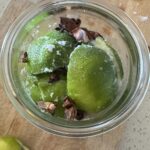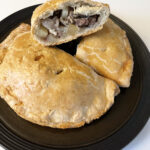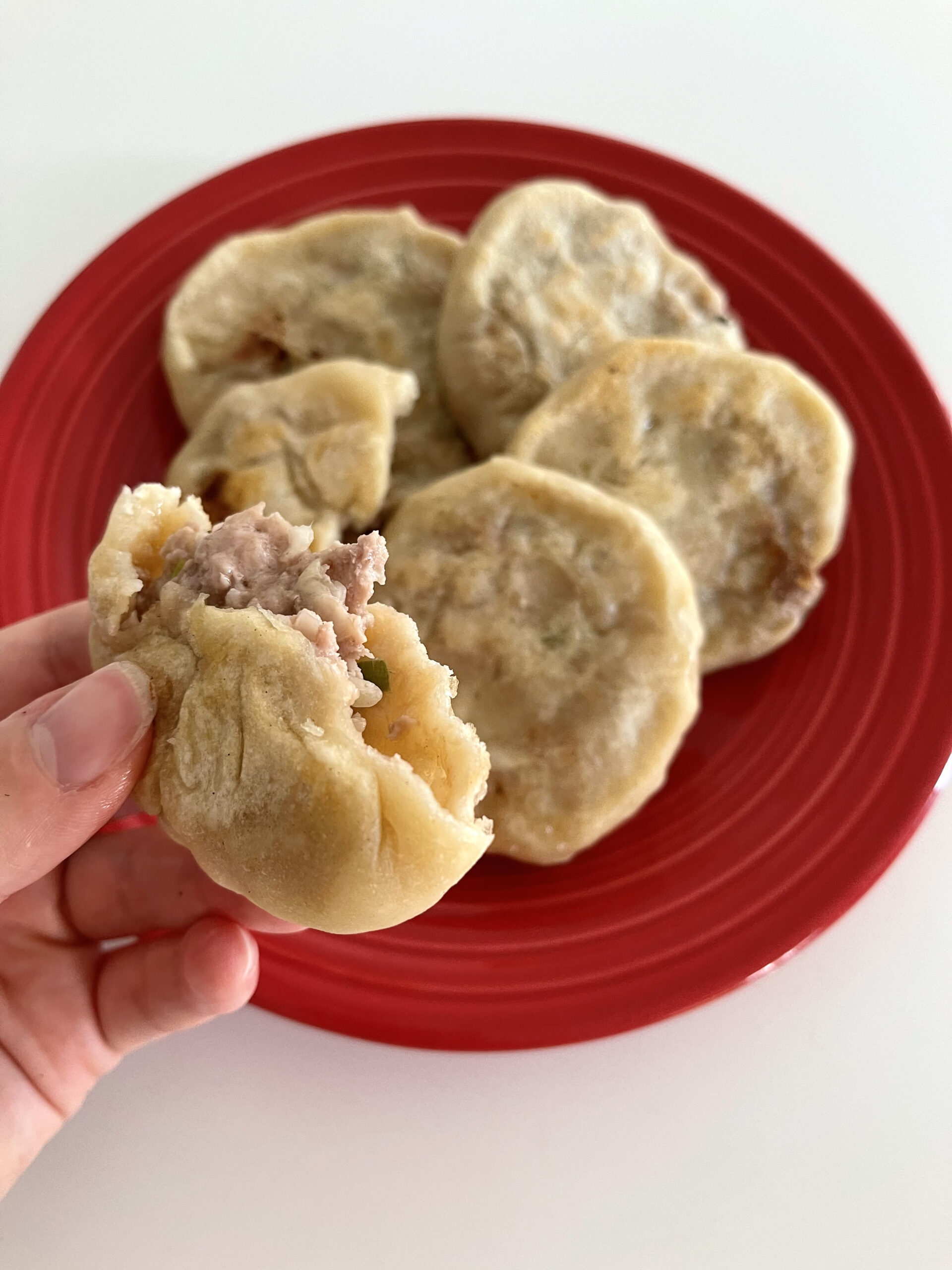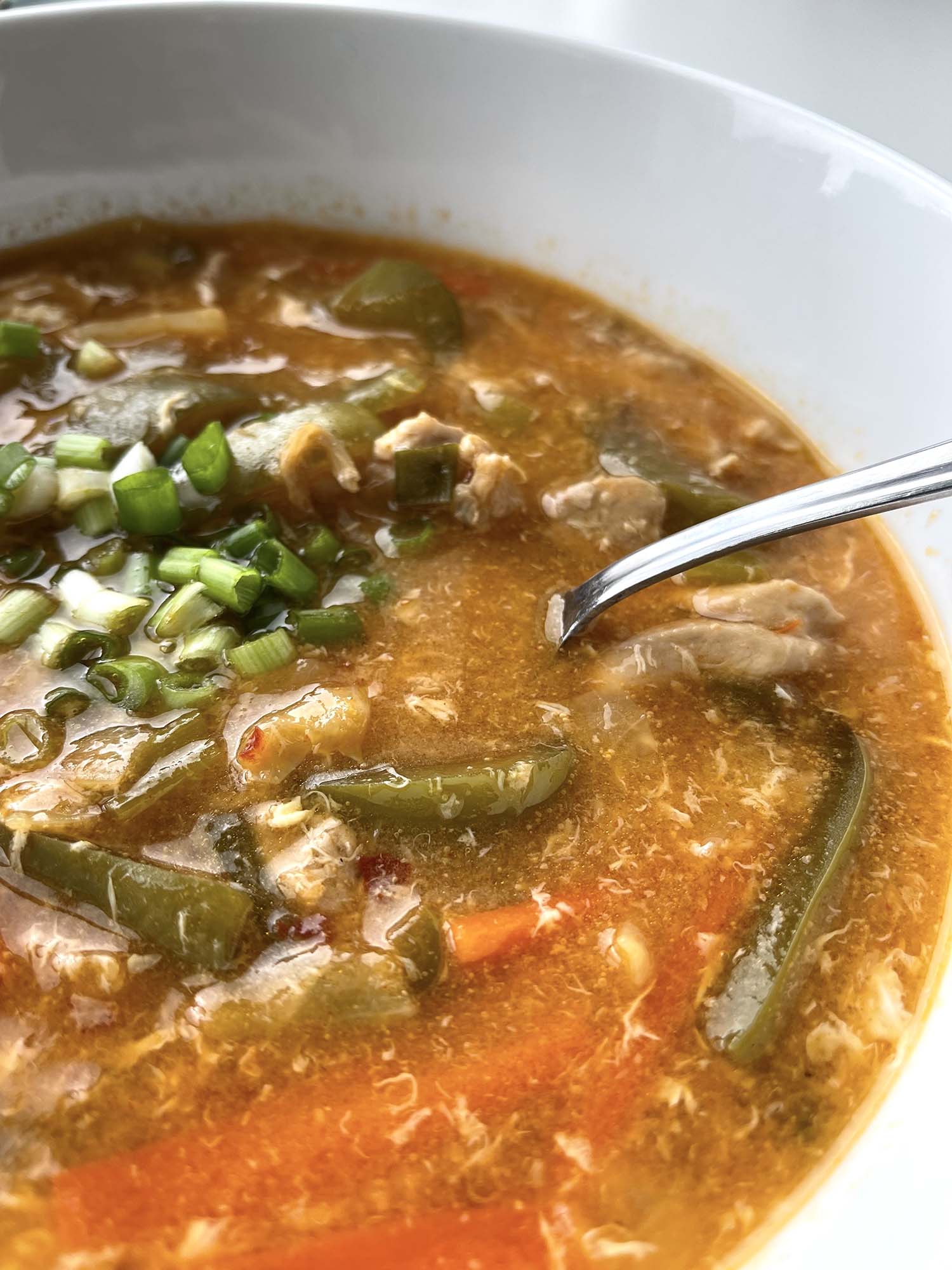Carbonara is a pasta dish originally from Rome. It consists of pasta tossed in a sauce made of hard cheese (usually pecorino romano or parmigiano reggiano), egg, and cured pork (guanciale or pancetta). This dish has also gained popularity in Japan, where the recipe has been tweaked a bit. The biggest differences are that it’s made with bacon, has garlic, and is often topped with thinly sliced green onions. One of the best aspects of Japanese carbonara is that it’s super quick and easy to make, but looks and tastes like you’re sitting down at a fancy restaurant.
On the Ingredients
- Pecorino romano is a hard, salty sheep milk cheese from Italy. It’s usually used for pasta dishes. Pecorino romano should not be confused with the romano cheese sold in the US, which is a milder cheese made from cow milk. The name Pecorino romano is protected under EU laws.
- Parmigiano reggiano is a hard, granular, aged cow milk cheese from Italy. It is a very beloved and prized cheese, and its name is protected under EU law. Parmesan is also used inside Italy but is also used for imitation cheeses that are produced outside of Italy. Parmigiano reggiano is aged for a minimum gf 12 months and has a very strong, nutty flavor.
Japanese-Style Carbonara
2
servings5
minutes15
minutes20
minutesCarbonara is a pasta dish originally from Rome. It consists of pasta tossed in a sauce made of hard cheese (usually pecorino romano or parmigiano reggiano), egg, and cured pork (guanciale or pancetta). This dish has also gained popularity in Japan, where the recipe has been tweaked a bit. The biggest differences are that it’s made with bacon, has garlic, and is often topped with thinly sliced green onions. One of the best aspects of Japanese carbonara is that it’s super quick and easy to make, but looks and tastes like you’re sitting down at a fancy restaurant.
Ingredients
2 slices of bacon (cut into small pieces)
1 clove garlic
1 egg
2 tbsp milk
1/2 cup grated pecorino romano OR parmigiano reggiano OR a combination of both + a little more for topping
8oz spaghetti (uncooked)
1 scallion (just the green part, finely sliced)
salt and pepper to taste
Directions
- To prepare the garlic clove for flavoring the bacon fat, use the board side of a wide vegetable knife, crushing the clove into the cutting board until it is cracked and flattened.
- Add the bacon and garlic to a large cold pan and turn the heat to medium (starting with a cold pan will help render more of the bacon fat). Cook the bacon until it’s browned, stirring occasionally. Turn off the heat and pour out most of the garlic flavored bacon fat, keeping just enough in the pan to grease it.
- Remove the crushed garlic (you can throw it away or smear it on some toast).
- Stir together the egg, cheese, and milk with a few pinches of salt and pepper. Make sure it is thoroughly combined.
- Fill a large pot with about 5 quarts of water. Add a generous amount of salt to the water and bring it to a boil. Add the pasta and cook for 1 minute less than the package instructs, stirring with a pair of kitchen tongs often to keep the noodles from sticking together.
- When the pasta is ready, turn off the heat and use the tongs to move the pasta from the boiling water to the bacon pan (do not drain the water as you want the noodles as hot as possible).
- Use the tongs to mix the pasta and bacon together, then pour the egg mixture into the pan while stirring the noodles. The eggs will cook from the residual heat of the noodles, and it is critical to stir continuously, so you don’t end up with scrambled eggs and pasta! If the sauce isn’t as thick and creamy as you’d like, place the pan with the noodles atop the pot still holding the cooking water, and the rising steam will continue to warm the noodles and thicken the sauce.
- Once you have a nice, creamy sauce coating your noodles, divide them between two plates. Top with more grated cheese and the sliced scallion. Serve hot!
Notes
- Nutritional Info Per serving (approx. 2 serving)
Unmodified recipe:
655 Calories
29g Protein
19g Total Fat
87g Carbs
